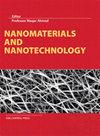纳米结构添加剂改性涂料的制备及其潜在应用
IF 3.3
3区 材料科学
Q2 MATERIALS SCIENCE, MULTIDISCIPLINARY
引用次数: 33
摘要
最近,据报道,用于固体表面涂层的智能纳米材料的产量有所增加。这些纳米材料具有防腐、抗菌和自清洁等多种功能。因此,采用绿色化学方法合成了二氧化钛(TiO2)和氧化锌(ZnO)纳米颗粒。通过扫描电子显微镜、能量色散X射线、高分辨率透射电子显微镜、X射线衍射、紫外(UV)-可见光谱、Brunauer–Emmett–Teller试验和氮吸附-解吸等温线对这些纳米颗粒进行了全面表征。然后,通过使用不同浓度(2、3.5和5w/v%)的纳米颗粒对商业搪瓷型涂料进行改性。然后将这些纳米填充涂料刷到不同类型材料的表面,如碳钢片、木板和铝盘。评估了纳米填充涂料的防腐、自清洁和抗菌性能,目的是确定其应用能力。根据表征结果,TiO2和ZnO纳米颗粒与使用传统方法合成的纳米颗粒相比,表现出相似的物理化学性质。防腐结果表明,纳米填充涂料使用低浓度的纳米颗粒提供了屏障,这是因为表面上的团聚体减少了,避免了高孔隙率的存在。在自清洁的情况下,提出的降解机制表明,由于纳米颗粒提供的高表面积,油漆中两种纳米颗粒的存在提供了亚甲基蓝的高降解。另一方面,只有ZnO纳米颗粒在紫外光下具有抗菌活性,这可能与纳米颗粒扩散到细菌的细胞膜中,影响正常功能有关。这些结果表明,TiO2和ZnO纳米颗粒对涂料的改性,以及在建筑固体表面甚至纺织领域的应用都很有前景。本文章由计算机程序翻译,如有差异,请以英文原文为准。
Preparation of modified paints with nano-structured additives and its potential applications
Recently, an increase in the production of intelligent nanomaterials has been reported for the application of solid surface coating. These nanomaterials provide a wide number of functionalities such as anticorrosive, antibacterial, and self-cleaning properties. Hence, titanium dioxide (TiO2) and zinc oxide (ZnO) nanoparticles were synthesized using a green chemistry approach. These nanoparticles were fully characterized by scanning electron microscopy, energy-dispersive X-ray, high-resolution transmission electron microscopy, X-ray diffraction, ultraviolet (UV)–visible spectroscopy, Brunauer–Emmett–Teller test, and nitrogen adsorption–desorption isotherm. Then, a commercial enamel-type paint was modified by using different concentrations (2, 3.5, and 5 w/v%) of nanoparticles. These nanofilled paints were then brushed onto the surface of different types of materials such as carbon steel sheets, wood sheets, and aluminum disks. Anticorrosive, self-cleaning, and antibacterial properties of the nanofilled paints were evaluated, with the aim to determine the capability for this application. According to the characterization results, TiO2 and ZnO nanoparticles exhibited similar physicochemical properties compared to those synthesized using traditional methods. The anticorrosion results revealed that nanofilled paints provide a barrier using low concentrations of nanoparticles, due to the decrease of agglomerates on the surface avoiding the presence of high porosity. In the case of self-cleaning, a proposed mechanism of degradation demonstrated that the presence of both nanoparticles in the paint provided high degradation of methylene blue due to the high surface area offered by the nanoparticles. On the other hand, antibacterial activity under UV light was observed only for ZnO nanoparticles, which may be related to the diffusion of nanoparticles into the cell membrane of the bacteria, affecting the normal function. These results showed to be promising for the modification of paints with TiO2 and ZnO nanoparticles, and the application on solid surfaces for the construction, and even in textile fields.
求助全文
通过发布文献求助,成功后即可免费获取论文全文。
去求助
来源期刊

Nanomaterials and Nanotechnology
NANOSCIENCE & NANOTECHNOLOGY-MATERIALS SCIENCE, MULTIDISCIPLINARY
CiteScore
7.20
自引率
21.60%
发文量
13
审稿时长
15 weeks
期刊介绍:
Nanomaterials and Nanotechnology is a JCR ranked, peer-reviewed open access journal addressed to a cross-disciplinary readership including scientists, researchers and professionals in both academia and industry with an interest in nanoscience and nanotechnology. The scope comprises (but is not limited to) the fundamental aspects and applications of nanoscience and nanotechnology
 求助内容:
求助内容: 应助结果提醒方式:
应助结果提醒方式:


